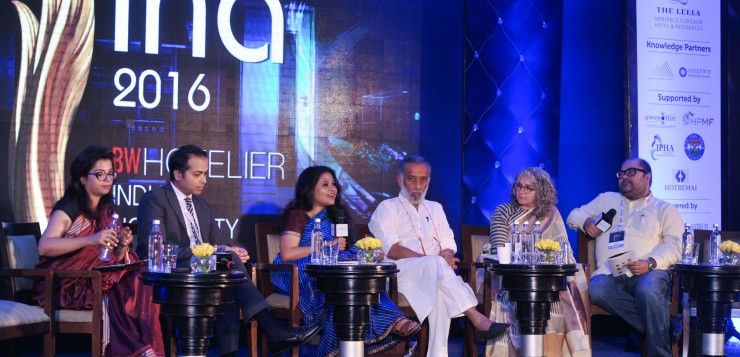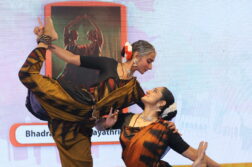Advertisements stereotyping women
If your blouse is without its sleeve then, according to Indian advertisements, you don’t provide adequate nutrition to your children. Through an event I was hosting recently, this was an enlightening piece of information I received on the stereotypes the advertising industry reinforces. One of the panels comprised of Communication experts deliberating on the topic Engaging the customer in an attention deficit age. Swati Bhattacharya, Chief Creative officer of FCB eluded on the diktats of brand custodians armed with MBA’s and their fetish with attributes of women based on their attire. So depending on the brand being promoted the length of the sleeve of her blouse or for that matter her hair will create, reinforce and label the woman featuring in it.
Swati, applauded the Hindi film industry that has begun to look beyond stereotypes, in depicting characters from real life in their portrayal of women. She cited an example of Queen where the protagonist goes on her honeymoon despite her marriage falling apart. The film was not only successful in portraying a real life middle class girl but was also a commercial success. ‘There was a time when advertisements forayed into breaking stereotypes while films shied away, now unfortunately its the other way round’
Impressed with her thoughts , I texted her to write for WE. She reverted with a reference to her blog titled If everybody is selling to Nirupa Roy, who is selling to Zeenat Aman?
My response was ‘..but both seem to be still selling to labels’ none the less I will read the blog.
And here am sharing it with you as well.
Source : Economic Times
Forgive me for the cheesy headline but we are talking stereotypes here… aren’t we? Maggi mom, Surf mom, Good Knight mom, Vim mom, Lizol mom, Red Label mom all come from Nirupa’s lineage: the way she was, what she believed in, what made her a 475 film icon without changing her hair or sari even once!
In photo: Zeenat Aman & Nirupa Roy (inset)
All these moms are clones of each other and if I were to remove the brand window and their brand coloured saris, you would have trouble recognising one from the other. No stock character is as ubiquitous in advertising as the sacrificial mother.
Allergic to delegating, their manicured hands do everything from grinding masalas, killing kitanu under the toilet rim, rubbing dirt from husband’s collar, making fluffy rotis from scratch, and when they are doing nothing, their idea of free time is playing 20 questions with a scientist.
Born in boardrooms in glitzy high rise offices, these women absolutely flourish in slides and pie charts. Obeying their masters to the T, they do anything they are told however bizarre it may be: Sunday morning aerobics in the kitchen or a walk in the friendly neighbourhood laboratory.
In MNC boardrooms, we encounter a patriarchy that one just can’t sneak around or punch through or effectively crossdress into. MBA patriarchs are just as rigid as the khap panchayats. And that awful sick irrelevant question that we hate in courtrooms is often asked during pre production meetings: what is she wearing?
A sleeveless blouse could mean you wouldn’t feed your child well or having short hair could imply that your dishes have a layer of grime. Motherhood is an ideologically based social construct rather than a biologically determined state. And that is why when real mothers like you and me see these perfect little women on TV, we feel no connection to their lives, to their talk, to their stories. They are constructed to make you feel untouched.
In this age when we often are at a loss on how to connect or how to cure the visual disengagement we feel with ads on TV, real emotion for some reason still works. It is fundamentally the most important bit of any story. The best video games and virals are truly great because they make you feel things electronically!
Losing a game on the field or on the screen is equally gutwrenching for my 15-year-old. And as creators of content we need to respect that. Keeping the message first and the user second is no longer a choice we have. Then what is stopping us from going beyond the stereotype and creating connections that are meaningful relevant and interesting? Why did we love Kiron Kher as Manju from the film Khoobsurat? Or Farida Jalal in Dilwale Dulhaniya Le Jaayenge: she was everything kind and pure, but she was real. As was Zohra Sehgal in Cheeni Kum.
I totally love the new Havells home appliance campaign. Intimacy is the true algorithm of creativity. Without that no budget or foreign location can save us. Mothers are women. We are messy. Messed up. Raw. Fragile. Instinctive. Funny. We do things other than just worry about our brood. We make love. We read the back of packs of anti-aging cremes more carefully than we read school circulars. We giggle with our girlfriends on the phone while asking our kids to shut up.
Being in demand is not as cool as being desired. We know that. It’s time brands knew that about us too.






